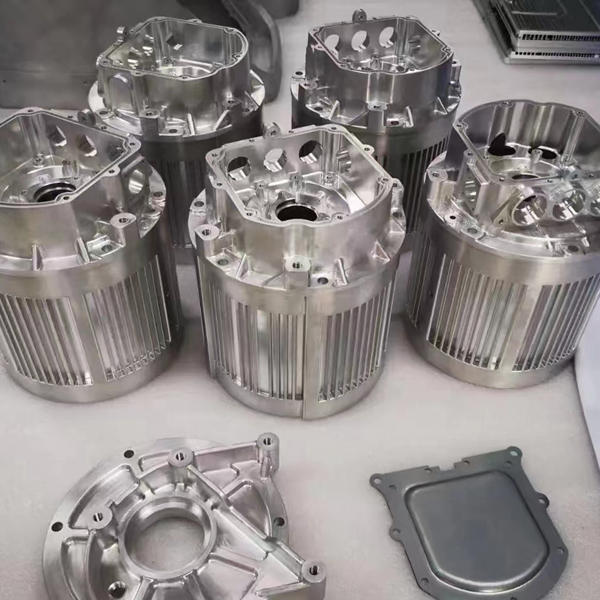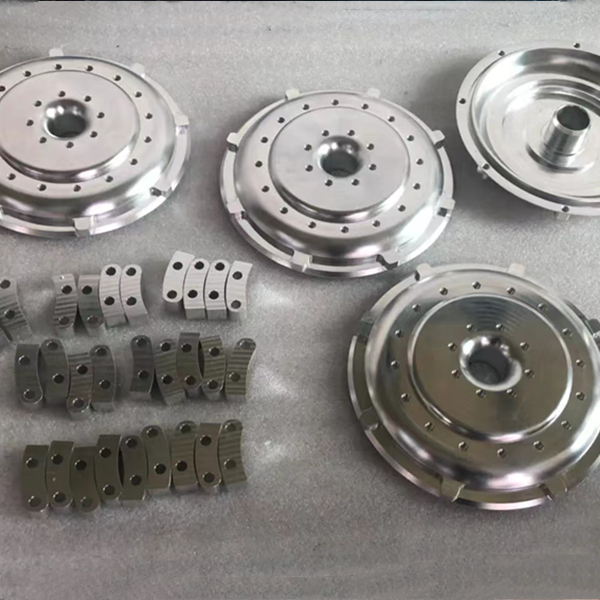Aluminum CNC machining is a cornerstone of modern manufacturing, offering unparalleled versatility for industries ranging from automotive to renewable energy. At Falcon CNC Machining, we leverage advanced technologies and decades of expertise to deliver precision aluminum components tailored to your exact specifications. This comprehensive guide explores everything from material selection to industry-specific applications, empowering you to optimize your projects for efficiency and performance.
1.What is Aluminum CNC Machining?
Aluminum CNC machining involves shaping aluminum alloys into functional components using computer-controlled milling, turning, or drilling. Renowned for its lightweight properties, corrosion resistance, and excellent thermal conductivity, aluminum is ideal for applications demanding durability and precision. Common uses include automotive brackets, electronic housings, and medical device components.

2.Aluminum CNC Machining Processes
5-Axis CNC Milling: Ideal for complex geometries like heat sinks or engine blocks, achieving tolerances up to ±0.005 mm. Our HAAS and Okuma machines ensure precision in 3D contours.
CNC Turning: Perfect for cylindrical parts such as bushings and valve stems, with Swiss-type lathes handling high-tolerance designs.
Wire EDM: For intricate cuts in thin-walled components without heat distortion, commonly used in electronics and medical devices.
Surface Finishing: Options include hard anodizing (for wear resistance) and electropolishing (to enhance conductivity).
3.Common Aluminum Alloys for Machining
6061-T6: High strength-to-weight ratio for structural components like automotive frames.
7075-T6: Aerospace-grade alloy (excluded here) repurposed for high-stress industrial machinery parts.
6082-T6: Superior corrosion resistance for marine applications.
2024-T3: Excellent fatigue resistance for automotive and robotics.
5052-H32: Ideal for sheet metal fabrication and fuel tanks.
6063-T5: Used in architectural extrusions and consumer electronics.
MIC-6: Cast aluminum for flatness-critical components like optical mounts.
4.Industry Applications of Aluminum CNC Machining
Automotive: Sensor housings, transmission components, and lightweight brackets.
Electronics: Heat sinks, RF shields, and connector housings.
Medical: MRI machine parts, surgical tools, and non-magnetic implants.
Renewable Energy: Solar panel frames and wind turbine heat exchangers.
Industrial Machinery: Hydraulic valve bodies and pneumatic fittings.
Consumer Goods: Smartphone casings and high-end kitchen appliances.
Marine: Corrosion-resistant fasteners and pump components.
Telecommunications: Antenna mounts and waveguide components.

5.High-Volume Aluminum Machining Capabilities
Our facility supports large-scale production with:
150+ CNC Machines: Including 5-axis mills and multi-spindle lathes for rapid throughput.
ISO 9001-Certified QC: Advanced CMM and optical comparators ensure dimensional accuracy.
Just-in-Time Delivery: Streamlined workflows to meet tight deadlines without compromising quality.
6.7 Expert Tips for Effective Aluminum CNC Machining
Tool Selection: Use sharp carbide tools with polished edges to reduce galling and burrs.
Optimized Feeds/Speeds: Maintain RPM between 1,500–3,000 to prevent material adhesion.
Coolant Strategy: Water-soluble coolants minimize heat buildup in high-speed operations.
Chip Management: Implement peck drilling for deep holes to avoid chip entanglement.
Fixture Design: Use vacuum chucks for thin-walled parts to prevent deformation.
Post-Machining Finishes: Hard anodizing improves wear resistance for automotive parts.
Design for Manufacturability (DFM): Simplify geometries to reduce machining time and costs.
7.Key Factors When Choosing an Aluminum Machining Partner
Material Expertise: Verify experience with your alloy (e.g., 6061 vs. 7075).
Certifications: ISO 9001 or ISO13485 compliance ensures quality standards.
Prototyping Support: Rapid turnaround for design validation.
Scalability: Confirm capacity for both low-volume and high-volume orders.
8.Why Choose Falcon CNC Machining?
Precision Engineering: Achieve tolerances as tight as ±0.005 mm with our 5-axis CNC machines.
Versatility: From micro components to large-scale production, we handle diverse projects.
Cost Efficiency: Bulk material partnerships reduce costs for high-volume orders.
Global Reach: Serving clients in North America, Europe, and Asia with fast shipping.
Request a Free Quote for your aluminum CNC machining project today!
9.FAQs About Aluminum CNC Machining
Q: What surface finishes are available for aluminum parts?
A: Options include hard anodizing, powder coating, electropolishing, and bead blasting.
Q: Can you machine thin-walled aluminum parts without deformation?
A: Yes, our vacuum fixtures and optimized toolpaths minimize distortion.
Q: How does aluminum compare to steel in weight and corrosion resistance?
A: Aluminum is 60% lighter and offers superior corrosion resistance but lower tensile strength.
Q: Which industries use aluminum components most frequently?
A: Automotive, electronics, and renewable energy due to aluminum’s lightweight and thermal properties.
Q: Do you provide design-for-manufacturability (DFM) feedback?
A: Yes, our engineers optimize designs for cost and performance.